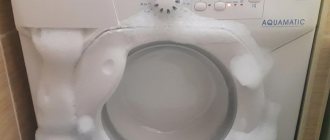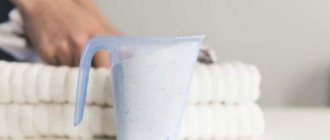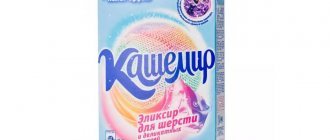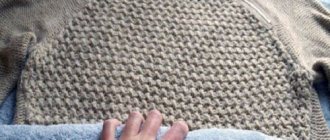What is membrane clothing
The membrane has several useful properties:
- It attracts moisture and controls it.
- Prevents unnecessary moisture from entering the parka from outside.
- Keeps you warm.
Ski jackets and suits are usually made from this material. And for good reason: you can move freely in them without wearing multi-layered clothing. In such clothes you are not afraid of strong winds. The heaviness of the thing is not felt either, since there is no padding polyester or fluff in it. Plus, washing a membrane jacket or pants is not that difficult.
If you want to enhance the protective properties of climate control, then feel free to combine outerwear with thermal underwear. But when you see that it is severely frosty, it is better to also wear a fleece sweatshirt.
Features of clothing with a membrane
The membrane material was invented back in 1969 by American inventors and was called Gor-Tex.
Currently, depending on the purpose, membrane clothing comes in several types:
- casual;
- professional;
- for active recreation (Gor-Tex Active).
Its design depends on the purpose of the clothing. Usually this is 2, 3 or 2.5 layers. The membrane itself, which is a thin film with micropores, is attached to the base or located between layers of fabric. The pores are very small, they do not let moisture in from the outside, but with great physical activity they easily remove sweat from the body to the outside.
A wear-resistant coating is used as the top layer, which is additionally treated with a special composition that repels water.
This type of outerwear has the following positive characteristics:
- does not allow moisture to pass through from the outside, but allows the skin to “breathe”;
- protects from wind;
- keeps warm;
- is light and durable.
Along with this, there are also disadvantages:
- High price
- Relatively short service life
- Special requirements for product care
Preparatory stage
If you follow all the rules for washing a ski jacket, then you don’t have to worry about either hand washing or machine washing. But in order to definitely achieve the best cleansing, there are rules on how to prepare things for the process.
The basis of the preparatory stage is cleaning the surfaces with a special soft brush or dry cloth. If there are areas that are too dirty, just remember where they are and in the future pay special attention to them when washing by hand. Be sure to remove any fur, if any, and fasten zippers, clasps, and buttons.
Why does the membrane stop breathing?
Even if there is no visible contamination on the membrane material, this does not mean that it is clean. The main enemies of this material are soot, sunscreens, repellents, antistatic agents, and any fat-containing liquid products. Gradually, dust, dirt, pollen, soot and other contaminants that are not always visible to the naked eye clog the pores in the membrane layer. The fabric stops breathing. All you have to do is move a little, and a steam room effect immediately appears. Remember the main thing:
Membrane products cannot be subjected to heat treatment (iron) and dry cleaned according to the usual rules.
Special products for cleaning and treating tourist and sports clothing and shoes
.
What to wash
A responsible housewife will immediately, even upon purchase, ask the question of how to wash membrane jackets. But it’s better to remember which jacket washing products you should avoid:
- Regular washing powders. Their particles will clog the pores of the membrane, so you can forget about its protective functions.
- Stain removers with chlorine and other solvents. They will definitely change the structure of the fabric.
- Conditioners and rinses. They will make a film on top of the fibers, which will prevent air from circulating properly.
Detergents for washing membrane jackets should be as soft and gentle as possible, without chlorine and small particles. The best option that can be found in any supermarket on the shelves with household chemicals is a special gel. It also says how to wash a membrane jacket.
How to wash a membrane in a washing machine
Many people say that it is better to choose hand washing for such a delicate item, but this is not at all necessary. If you follow all the recommendations, even in the washing drum your clothes will not get damaged. It is only important to remember the precautions.
- Do not wash membrane items at temperatures above 30-40 degrees. High temperatures can glue synthetic fibers together and permanently damage the item. Moreover, the paint with which the top layer is impregnated will not stand it.
- Before washing, make sure the spin mode is turned off. Mechanical actions can damage the material, especially inside the drum. It’s better to take the item out and dry it yourself.
- Do not wash, for example, overalls and other children's clothes at the same time. Dirt from them can be quite successfully absorbed by the material, so that later it will be impossible to clean it.
- If the item itself is a little dusty or dirty, it is better to wipe off the top layer before washing so as not to clog the drum again. The jacket may also not wash well if you skip this step.
- It would be a good idea to turn on an additional rinse mode. Especially if you washed the item with regular powder. You can try to save the situation in this way.
- Before washing, do not forget to fasten all fasteners.
There is no need to wash membrane clothing more than once a season. It takes a long time to dry, and there is a chance of damaging the material. The fabric does not absorb sweat, so this is not necessary.
Washing methods
The best option for washing ski jackets with a membrane is hand washing. There aren’t even any nuances on how to wash a thing correctly. You control the process yourself. If you choose a machine, you need to know what modes to wash membrane jackets on, since even at low speeds you can damage the protective film.
In the washing machine
If the fabric is durable and the label says that you can wash the membrane jacket in a washing machine, then feel free to proceed with the procedure.
Don't forget that you can't use conditioner! It’s better to hang a “reminder” next to the machine, as you can automatically pour it into the cell.
The scheme is simple:
- Select delicate mode (no higher than 40 degrees).
- Fill in a special washing gel.
- We soak particularly dirty areas in advance with dishwashing liquid.
If you are thinking about how to wash ski jackets in a washing machine, then the main rule is not to overload the drum. This way there will be no strong membrane friction.
Manually
For manual work, bathing gel, baby shampoo, or laundry soap are good options. The main thing is to choose a product without chlorine.
We wash a jacket with a membrane as follows:
- Remove everything unnecessary from your pockets, unfasten the fur, wrap the tab and zipper with tape.
- Add warm water to the bath or basin.
- Now let's figure out how to wash a down jacket. Pour in the detergent and shake until foam appears. Place the membrane fabric jacket into the solution.
- Don't wait for soaking; wash the item right away. There is no need to scrub the fabric, just apply the foam and go over it with a soft brush.
When finished, rinse the jacket. You don't need to twist it too hard. Lightly squeeze out the moisture, hang the item on a hanger to drain the remaining water, and get ready to dry.
Review of safe detergents for washing jackets
Washing the membrane jacket should preserve the Durable Water Repellency coating that is applied to the outside of the winter surface. It does not allow precipitation or excess moisture to enter inside.
To preserve the properties of the membrane, membrane cleaning professionals recommend special products. You can buy them at hardware and sporting goods stores.
| Name | Advantages | Flaws |
| Liquid Gel “Denkmit Fresh Sensation” |
| Should be used rarely; there is no impregnating agent for membranes in the composition |
| Product "Perwoll Sport Active" |
| Not always effective for jackets |
| Balm “Domal Sport Fein Fashion” |
| Not cheap |
| Textile Wash Plus Woly |
| Not detected |
| Nikwax Tech Wash Gel |
| Dear |
| Ariel capsule | effectively removes stains on jackets | Does not contain impregnation |
| Balsam “Washbalsam Nordland” |
| Better choice for down jackets than for membranes |
| Gel "Laska Activ & Fresh" |
| Contains anions, surfactants |
| Shampoo “SALTON Sport” |
| Difficult to find |
| Gel "Special Wasche" |
| Dear |
| TOKO Eco Textile Wash |
| Dear |
| Spray "Universal Cleaner" |
| Suitable for dry cleaning |
When choosing the best gel or balm, you should make a comparative comparison. For washing children's clothes, the best choice is TOKO Eco Textile Wash.
If you need to remove dirt from the collar of a jacket or pockets, you can choose “Special Wasche” Gel.
Porous cleaning professionals recommend 5 golden rules:
- Clean every time after washing using cosmetics. The method will preserve the properties of the membrane fibers for a long time.
- Wash only with approved shampoo and gel. For dry cleaning, use a spray.
- Dry your jacket away from radiators.
- Apply impregnation that preserves the water-repellent properties of the membrane only to clean items.
- Remove stains immediately after they appear.
By applying the recommendations in practice, the owner of a jacket with a membrane will preserve the item for many years.
Drying membrane clothing
Usually, after washing an item, you need to immediately prepare special conditions for drying:
- The room should be well ventilated.
- Avoid direct exposure to light.
- Do not use a hairdryer or iron for drying.
- Do not keep your jacket near a radiator.
If the item was dried incorrectly, although all washing conditions were met, the fabric can easily be damaged. Therefore, do not wring out clothes under any circumstances. But you still need to get rid of the remaining moisture. So just take a terry towel, robe or sheet. Wrap the jacket in a completely dry product and perform a series of squeezing movements, as if removing remaining water. The fabric will no longer be wet, but slightly damp.
How to dry it properly?
Washed items are hung on hangers indoors. The hood should be unfastened and hung separately. There is a slight draft in the room to prevent moisture from accumulating in the air. The jacket is placed away from the window, preventing direct sunlight from hitting it.
It is prohibited to speed up the drying process using:
- central heating batteries;
- hairdryer;
- iron;
- direct sunlight.
Under no circumstances should you dry membrane clothing on a regular clothesline. The product runs the risk of stretching from its own weight and losing its attractive appearance.
The dried sets are stored in the closet, hanging on hangers. To protect the membrane from dust, items are covered with a plastic bag.
How to iron membrane clothing
Place the item on a horizontal surface and straighten it so that there are no folds. We are waiting for it to dry completely. If possible, hang clothes on hangers. Dry the hood separately when it is possible to unfasten it.
Remember: do not iron your ski jacket either after you have finished washing it or before you begin!
Useful tips
In order not to disturb the special structure of the material, you should not iron it. The fabric does not tolerate high temperatures; the synthetic layer may melt. It is allowed to use a steam generator if the clothes are very wrinkled.
Some more useful care tips:
- Membrane jackets should be stored in a dry cabinet, in a horizontal position, clean and dried.
- Use special bags for things to prevent dust from settling on the surface.
- Do not wash every time after a trip to the ski resort. Only clean again if an unpleasant odor appears.
Membrane Fabric Processing
If you want your down jacket to continue to provide shelter from wind, moisture and dirt, soak it with a special high-quality product, such as a water-repellent spray, for additional protection. It should only be applied to a completely dry surface. Then leave the jacket to dry for some more time until the product is completely absorbed into the dried product, after which it is left again until it dries completely.
Sometimes in specialized stores you can find liquid products to treat and clean the membrane at home. Such substances must be worked strictly according to the manufacturer’s instructions. They are usually added to rinse water. If necessary, leave the down jacket in the prepared solution for the required time, and then leave it to dry without even rinsing it.
Care instructions
One of the main properties of things with a membrane is water resistance. To maintain this useful property, do not neglect special means:
- Vapor permeability is a property that allows clothing to “breathe”. When choosing a jacket, focus on the parameters 3000-4600mm. If you want higher protection from moisture, we recommend taking a closer look at microporous materials. They can withstand up to 15 thousand mm of water.
- One of the main protective factors for things with a membrane is the Durable Water Repellence (DWR) coating. It is located on the outside of the clothing and prevents moisture from penetrating inside. Unfortunately, Durable Water Repellence (DWR) can deteriorate over time, but it is quite possible to restore the coating to its original appearance.
- SALAMANDER, WOLW or NIKWAX are the best impregnation products that can be bought in specialized stores. Garment manufacturers have provided a spray head on the container to facilitate the use of the impregnating composition. You can also use a sponge for these purposes.
If you want to preserve the appearance and all the useful qualities of your clothes for as long as possible, it is recommended to regularly wash items with a membrane.
To stay dry even during heavy rainfall, you can restore the DWR coating using special products.
Choosing a product for a special fabric
Membrane fabric is distinguished by a special weave of polymer fibers consisting of microscopic pores . The membrane fabric is also coated with a special impregnation, which significantly increases the wear resistance and strength of the material.
Thanks to these features, clothing made of membrane fabric perfectly protects from rain, snow, wind, while at the same time maintaining the natural temperature of the human body and removing excess moisture.
to preserve all the positive properties of membrane fabric and extend the life of things only if you use the right detergent .
The main rule: membrane fabric is strictly prohibited from washing with dry, ordinary washing powders. The sulfates and phosphates contained in them destroy matter, and abrasive particles clog the pores, and the membrane loses its main positive property - air exchange.
Also, when washing membranes, you cannot use:
- Chlorine-containing agents (expand the pores of the membrane, dissolve the special impregnation, due to which the fabric loses its water-repellent properties).
- Bleach and stain remover (dissolves the water-repellent layer covering the membrane).
- Fabric softeners (degrade the positive qualities of membrane fabric).
How to wash membrane clothes:
- Laundry soap is a proven product that perfectly cleans and disinfects fabric.
- A special sulfate-free shampoo for washing fabric membranes (it can be easily purchased at a sports store).
- Gel concentrate is a mild cleanser that preserves all the positive properties of membrane tissue.
- Liquid membrane soap is an effective means of combating severe stains. Use together with impregnation helps enhance the water-repellent properties of the fabric.
You can make washing easier if you grate the soap on a coarse grater in advance and, as needed, add soap shavings to the drum of the washing machine or to a basin of warm water.
What to do if a greasy stain appears on the product?
If you put a greasy stain on the membrane, the first step is to prevent the grease from being absorbed. Rub the stain with a piece of ice, but not with soap. Scrape off the fat that has thickened from the cold with the blunt edge of a knife blade. Fat should be removed from the edges to the center of the stain to prevent its further spreading. After such cleaning, treat the stain with membrane shampoo or other special detergent for climatic membranes and, after pausing for half an hour or an hour, wash the item as usual using the same special detergents. If the stain remains after the first wash, it should be re-treated with detergent and washed again after a pause. Adhered resin should be dealt with in a similar way: it should also be carefully scraped off.











